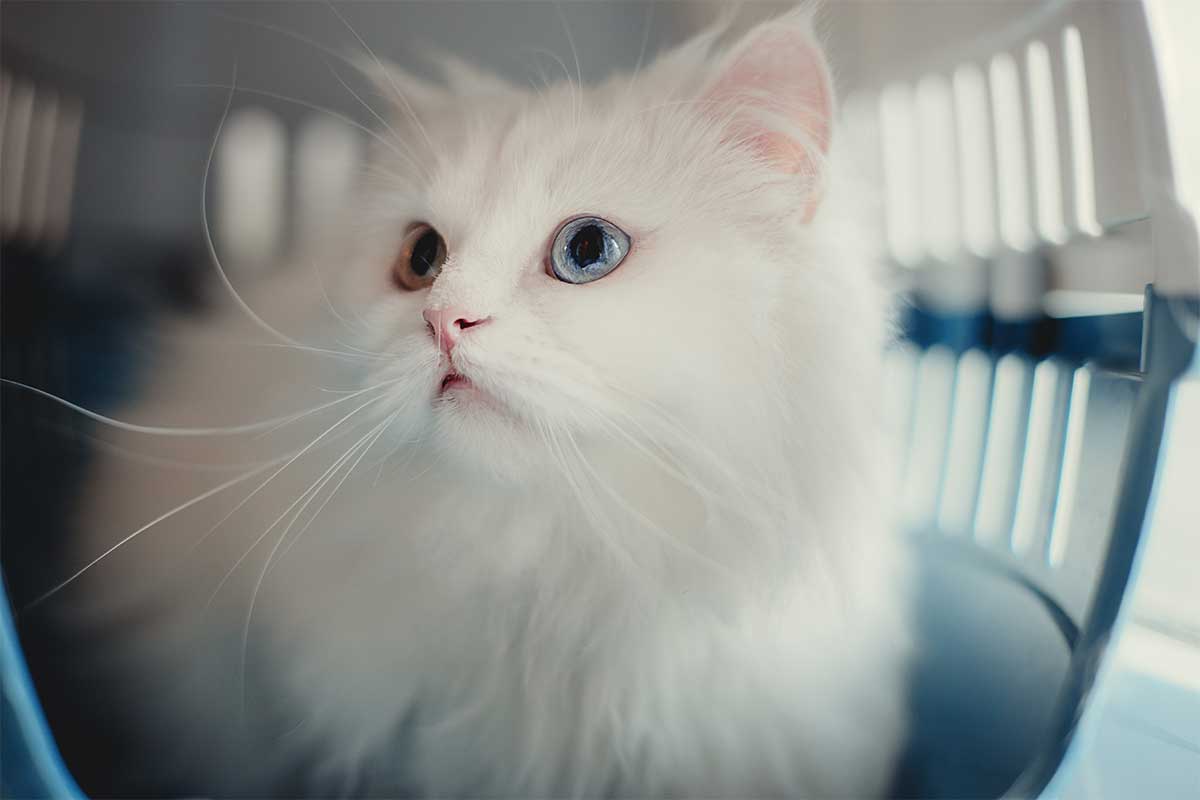A frenzied flight to a hiding place is a common feline response to the unearthing of a carrier for an imminent trip to the veterinarian. If it weren’t so sad and serious for the cat, we humans might view cat carrier follies as humorous. But the reality is far from entertaining when it comes to how damaging and detrimental carrier avoidance can be.
For many felines, the presence of a carrier signals that it’s time to panic and freak out rather than keep calm and carry on. The struggle results in missed veterinary visits, scratches, and emotional turmoil on the part of cat and person.
Thankfully, it doesn’t have to be this way. Instead of the carrier acting as the starting bell at a boxing match, instigating an adrenaline-fueled fight, it can be conditioned as a place of comfort and calm enjoyment where the cat willingly wants to hang out.
But before looking at ways to improve the cat’s experience, it’s important to understand the negative associations that develop from common cat carrier mistakes. Cats are placed inside them against their will, removed from the familiar comforts of home, and whisked away to a place where discomfort may occur.
Many times the carrier is moved in a swinging motion, what for a cat may feel like the equivalent of a bad carnival ride. Or the heft of a larger cat may slide and settle down on one end of the carrier and then make continued impact with the person’s knee as the cat is carried, angled upward like the tipping of the Titanic before it slid beneath the waves.
The car ride too may be full of jostling, jolting, tipping, and dipping, as the carrier slides and shifts during turns, speed changes, and stops. Once inside the clinic, the cat may feel in danger from the scent of potential predators such as unfamiliar dogs and unknown people.
The key to carrier contentment lies in giving the cat a positive association with the area and turning it into fun furniture where the cat chooses to dwell. Cats are able to learn with ease what is safe versus unsafe or pleasant versus unpleasant. Just as cats can make positive associations with sounds such as the crinkle of a treat bag crinkling or the whirr of a can opener, so too can a carrier be transformed into a space where the cat likes to be.
To ensure that a carrier brings out feelings of rest and reassurance instead of nervous apprehension, start with a proper introduction, or reintroduction, of it as a piece of “purr’niture” in your home. Attract the cat to it with treat trails, comfortable bedding, feline pheromones, and favorite toys. The more the cat decides to go in on her own, the easier it will be to encourage her to enter it when it’s necessary for travel.
When the cat is inside, support and stabilize the carrier when lifting and transporting it. Hold it close to your core for extra stability. Keep all sides level so the cat stays balanced. Place it in an area of the car with minimal movement, such as on the floor behind the passenger seat.
Minimize the cat’s view out of the carrier by covering it with a towel, leaving only one end open. Most important, limit carrier qualms by partnering with Fear Free certified professionals who employ emotionally protective strategies such as taking the cat directly into the exam room to minimize waiting room stress or having areas to place carriers out of the way of foot traffic and other pets.
This article was reviewed/edited by board-certified veterinary behaviorist Dr. Kenneth Martin and/or veterinary technician specialist in behavior Debbie Martin, LVT.








